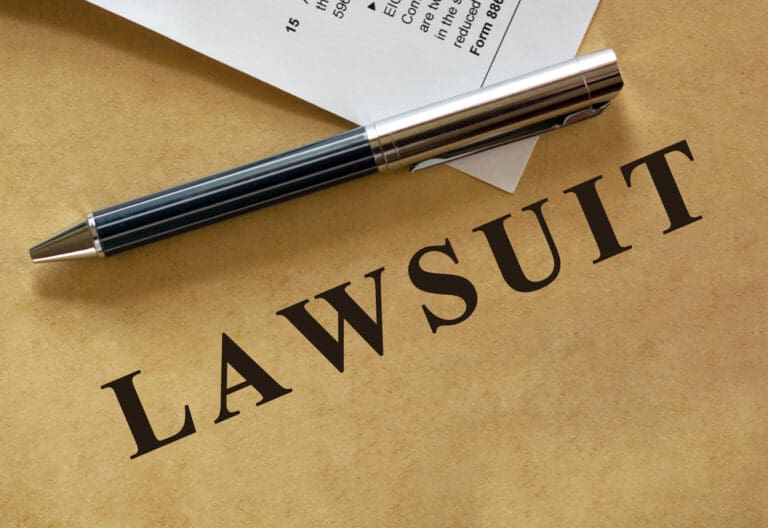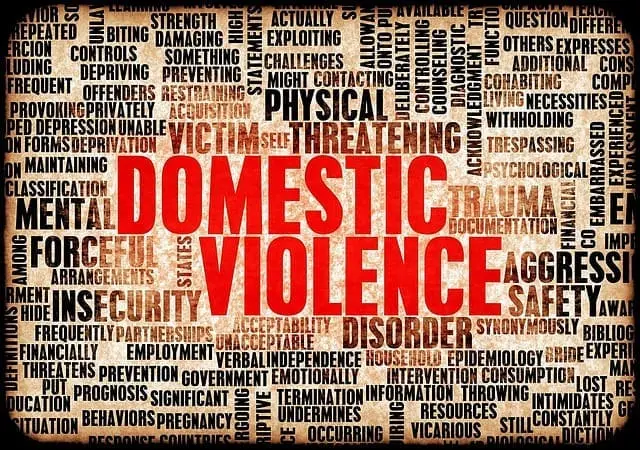
The journey toward early release through parole is a pivotal chapter in the American justice system, one that demands both preparation and a clear-eyed understanding of the process. For those seeking to maximize their chances at a parole hearing, the stakes are high, and the path is anything but straightforward. Parole Hearing Tips: Increasing Chances of Early Release is more than a catchphrase—it is a strategic approach rooted in personal accountability, rehabilitation, and a keen awareness of what parole boards actually value.
At its core, the parole hearing is not simply about recounting the past or pleading for leniency. It is an exercise in demonstrating transformation and readiness for reintegration. The board’s mandate is to protect public safety, and every applicant must contend with that reality. This means that an effective presentation at a parole hearing is built on a foundation of honesty, introspection, and concrete evidence of change. Boards are not swayed by empty promises or rehearsed apologies; they look for genuine insight into the causes of past behavior and a credible plan for the future.
Preparation begins long before the hearing date. The most successful applicants start by understanding the specific criteria and procedures of their state’s parole board. Each jurisdiction has its own set of guidelines, and familiarity with these details is essential. Researching the board’s expectations, reviewing past decisions, and even consulting with a legal professional can provide invaluable perspective. The use of risk assessment tools has become increasingly common, and applicants should be ready to address any concerns that arise from these evaluations. These tools, while helpful, are not infallible, and it is important to highlight aspects of personal growth or support systems that may not be fully captured in a numerical risk score.
A comprehensive release plan is indispensable. This plan should address housing, employment, and ongoing support, demonstrating that the applicant has thought through the logistics of reentry. Parole boards want to see that the individual is not only ready to leave prison but is also prepared to thrive outside its walls. This means lining up job opportunities, securing stable housing, and building a network of family or community support. Letters of recommendation and evidence of community ties can further bolster the case for release, as can a documented history of participation in educational or vocational programs.
Behavior during incarceration is scrutinized closely. Disciplinary infractions, participation in rehabilitation programs, and work history all serve as indicators of an individual’s readiness for release. Consistent, positive conduct demonstrates a commitment to change and a respect for institutional rules. Participation in rehabilitative programs, such as substance abuse counseling or anger management, shows initiative and a willingness to address the root causes of criminal behavior. Completion of educational or vocational training is another strong signal to the board that the applicant is serious about building a productive life post-release.
The personal statement is a critical component of any parole hearing. This is the opportunity to speak directly to the board, to acknowledge past mistakes, and to articulate a vision for the future. The most effective statements are honest, reflective, and forward-looking. They do not minimize or justify the crime but instead focus on what has been learned and how the individual has changed. Expressing genuine remorse and taking responsibility for one’s actions is essential. Parole boards are looking for applicants who understand the impact of their crimes—not just on themselves, but on victims and the broader community.
Insight into one’s own behavior is a recurring theme in successful parole hearings. The board wants to see that the applicant has grappled with the factors that led to incarceration and has developed strategies to avoid repeating those mistakes. This means being able to discuss the circumstances of the offense, the influences at play, and the steps taken to address those issues. Demonstrating a clear understanding of what went wrong—and how it will be different moving forward—is a powerful way to build credibility with the board.
Rehearsing for the hearing is not about memorizing answers but about developing the confidence to speak candidly and thoughtfully. Practicing responses to likely questions, especially those about the crime, rehabilitation efforts, and future plans, can help reduce anxiety and ensure that the presentation is clear and focused. It is also important to prepare emotionally; parole hearings can be intense and personal, and maintaining composure is key. Practicing with a trusted friend, family member, or attorney can provide valuable feedback and help refine the message.
Legal representation is not required at parole hearings, but it can be a significant asset. An experienced attorney can help navigate the complexities of the process, ensure that all relevant documentation is in order, and provide guidance on how to present the strongest possible case. Attorneys familiar with parole hearings understand what boards are looking for and can help anticipate and address potential concerns. They can also assist in gathering support letters and preparing witnesses, further strengthening the application.
Support from family, friends, and community organizations is another factor that can influence the board’s decision. Demonstrating a robust support system reassures the board that the applicant will not be isolated upon release and will have access to resources and guidance. Letters from employers, religious leaders, mentors, or counselors can attest to the individual’s character and readiness for reintegration. Some boards also consider the presence of supporters at the hearing itself as a positive sign.
The role of victims and their families cannot be overlooked. In many jurisdictions, victims are permitted to make statements or submit written testimony. The board weighs these perspectives carefully, and applicants should be prepared to respond respectfully. Acknowledging the harm caused and expressing genuine remorse can help address victim concerns and demonstrate maturity.
Risk of recidivism is a central concern for parole boards, and applicants must be prepared to address this issue directly. Boards rely on a combination of risk assessment tools, personal interviews, and institutional records to gauge the likelihood of reoffending. Demonstrating a low risk of recidivism involves more than just avoiding disciplinary infractions; it requires a holistic presentation of rehabilitation efforts, personal growth, and a realistic plan for the future.
The trend toward data-driven decision-making in parole hearings is growing. Some states are incorporating machine learning algorithms and statistical models to assess risk and identify patterns in parole decisions. While these tools can help reduce bias and improve consistency, they are not a substitute for human judgment. Applicants should be aware of how these assessments work and be prepared to discuss any discrepancies between their personal narrative and the risk profile generated by such tools.
Parole grant rates vary widely by state and by individual circumstances. In some jurisdictions, grant rates have increased in recent years as boards have adopted more structured guidelines and placed greater emphasis on rehabilitation and risk reduction. In others, grant rates remain low, and the process is marked by long delays and frequent denials. Understanding the trends and challenges in one’s own state can help set realistic expectations and inform preparation strategies.
The aftermath of a parole hearing, whether successful or not, requires careful planning. If parole is granted, compliance with all conditions is essential. These may include regular check-ins with a parole officer, maintaining employment, attending counseling, or avoiding contact with certain individuals. Violating parole conditions can result in a return to prison, so it is crucial to understand and adhere to all requirements. If parole is denied, it is important to review the board’s reasoning, address any identified shortcomings, and begin preparing for the next opportunity.
Recidivism remains a significant challenge in the parole system. Studies have shown that a substantial percentage of parolees are rearrested or reincarcerated within a few years of release. Factors such as age, education level, and prior criminal history all play a role in these outcomes. The earlier the first adult arrest, the higher the likelihood of recidivism. Addressing these risk factors through targeted rehabilitation and support can improve the odds of successful reentry.
The influence of prosecutors and the weight given to risk assessments are subjects of ongoing debate. In some states, prosecutors attend a significant number of hearings and their input can sway the outcome. There is also concern that negative risk assessments carry more weight than positive ones, leading to inconsistent results. Advocates argue for greater transparency and accountability in the process, as well as more consistent application of risk assessment findings.
The emotional toll of the parole process is considerable. Applicants must confront their past actions, face the possibility of continued incarceration, and navigate a system that can seem opaque and unforgiving. Self-care and emotional preparation are as important as legal and logistical readiness. Developing coping strategies, seeking support from counselors or mentors, and maintaining a sense of hope can help applicants persevere through setbacks.
Technological advances are beginning to reshape the parole process. Virtual hearings, electronic monitoring, and data analytics are becoming more common. These innovations offer both opportunities and challenges. Virtual hearings can increase access and reduce delays, but they also require applicants to adapt to new formats and technologies. Electronic monitoring can provide an added layer of accountability, but it also raises questions about privacy and autonomy.
Policy trends point toward a growing emphasis on reentry support and risk reduction. Corrections departments and parole boards are increasingly collaborating to develop individualized reentry plans that address housing, employment, and treatment needs. Prioritizing access to programs and timely placement in risk-reduction initiatives can help ensure that individuals are ready for libertad condicional at their earliest eligibility. States are also experimenting with structured guidelines to increase transparency and consistency in release decisions.
Public safety remains the paramount concern for parole boards, but there is a growing recognition that successful reentry benefits not only the individual but also the broader community. Reducing barriers to housing, employment, and treatment can lower recidivism rates and promote stability. Investment in reentry programs and community partnerships is essential for creating pathways to success.
For those preparing for a parole hearing, the message is clear: preparation, honesty, and a commitment to change are non-negotiable. Understanding the board’s criteria, assembling a robust release plan, demonstrating rehabilitation, and articulating a vision for the future are all critical components. Legal representation, community support, and emotional resilience can further enhance the chances of success.
Ultimately, Parole Hearing Tips: Increasing Chances of Early Release is about more than navigating a bureaucratic process. It is about demonstrating to the board—and to oneself—that the lessons of the past have been learned and that the future holds the promise of redemption. The road to early release is demanding, but for those willing to do the work, it is a road that leads not only to freedom but to the possibility of a new beginning.
Citations:
- Public Safety Strategy Action Item
- Parole Hearing Success Strategies
- Parole Preparation Toolkit Guide
- How to Win a California Parole Hearing
- California Parole Grant Rates
- Parole Trends for Long-Term Offenders
- AI in Parole Decision Evaluation
- USPC Frequently Asked Questions
- Recidivism Among Young Parolees
- Parole Hearings Overview
- Preparing for a Parole Board Hearing
- California Parole Insights
- Preparing for a Parole Hearing Tips
- Parole Resource Packet Guide
- Improving Parole Release in America
- Reducing Reoffending in Prison
- Dos and Donts of Parole Hearings
- How to Win a California Parole Hearing
- Texas Board of Pardons and Paroles
- YouTube Video on Parole Topic
- FAMM Second Chances Program
- Tips for Parole Hearing Success
- Self-Help Guide to Parole Prep
- Texas Parole Information Guide
- YouTube Video on Parole Topic
- Chance of Getting Paroled Discussion
- Parole Preparation Toolkit Guide
- Parole Hearings Overview
- NLP Thesis on Semantic Analysis
- Finding Low Competition Keywords
- Uncommon Law Resources
- SEO Keyword Research Guide
- Semantic Variation Types Explained
- How to Find Low Competition Keywords
- Secret Tips for Winning Parole
- Keyphrase Density Importance
- CLASP Seminar Presentation
- Low Competition Keywords Strategy
- California Parole Statistical Data
- BPH Parole Hearing Update
- Reentry and Parole Insights
- Offender Outcomes Data Points
- Parole Law FAQs
- California Parole Recidivism Rates
- High-Risk Inmates Early Releases
- Parole Board Community Supervision
- Probation and Parole Statistics
- Recidivism of Felony Offenders
- Parole Suitability Hearing Results
- USPC Victim Witness Program
- YouTube Video on Parole Topic
- Parole Hearing Process Handbook
- Keyword Research Best Practices
- ACL Anthology NLP Research
- Guide to Low Competition Keywords
- Using Keywords for SEO Improvement
- California Parole Grants Analysis
- Parole Board Behavior Report








